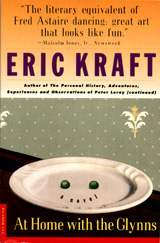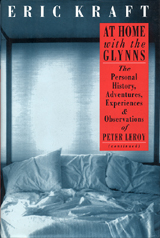
YOU CAN READ
THE FIRST HALF OF
THE BOOK
(21 CHAPTERS)
HERE,
ONLINE,
OR,
FOR MAXIMUM PORTABILITY
AND CONVENIENCE
WHEN READING
ON THE BEACH
OR
IN THE TUB,
YOU CAN BUY THE
PICADOR USA
PAPERBACK EDITION AT
AMAZON.COM
OR
BARNES&NOBLE.COM
OR
YOU CAN DOWNLOAD
THE COMPLETE TEXT
AS AN
eBOOK
AND
READ IT ON A PDA.

|
Chapter 12
A Nevsky “Fictofacto”
 ECAUSE
THE SHELL of the mansion survived, the Nevsky place was still the grandest
house in town, still the largest and most substantially built, and even
if it was uninhabitable, it still was able to play its most important role
for Babbingtonians, including me: its role as a narrative device.
The mansion’s shell focused the stories that people told about the fire.
It didn’t give those stories a point, and I didn’t recognize that
lack for a long time, but it did give them a focus and, thereby, a tightness
they would not otherwise have had. The shell, the presence of it,
the way it loomed—in fact and in the mind’s eye—brought the storyteller
back to it, and to the night when it had burned, giving a center to stories
that would otherwise have drifted off in a thousand directions because
the people who told the stories really wanted to tell stories about themselves,
just as I do. The best of the storytellers, I came eventually to
understand, learned how to shape the story of the fire to make it a story
about themselves, seasoning it with details imported from regions of their
lives far removed from the fire, but they all learned—and I learned from
listening to them—that they couldn’t get away with telling only their egocentric
stories. They had to put the mansion at the center. They couldn’t
just blather on about themselves. They had to keep returning to the
mansion. If they kept the mansion there at the center, if
the portraits they painted of themselves showed them standing in front
of the mansion that chilly night late in the year, their faces ruddy with
the light of the flames, if they used the fire as a basis for some
speculation about the ways in which their lives and their listeners’ had
been forever linked through the experience of the fire, if they
said something apparently wise about the way it had brought so many lives
together at a common point, then they could hold an audience for
a very long time, and they could bring themselves into the story as often
as they liked. ECAUSE
THE SHELL of the mansion survived, the Nevsky place was still the grandest
house in town, still the largest and most substantially built, and even
if it was uninhabitable, it still was able to play its most important role
for Babbingtonians, including me: its role as a narrative device.
The mansion’s shell focused the stories that people told about the fire.
It didn’t give those stories a point, and I didn’t recognize that
lack for a long time, but it did give them a focus and, thereby, a tightness
they would not otherwise have had. The shell, the presence of it,
the way it loomed—in fact and in the mind’s eye—brought the storyteller
back to it, and to the night when it had burned, giving a center to stories
that would otherwise have drifted off in a thousand directions because
the people who told the stories really wanted to tell stories about themselves,
just as I do. The best of the storytellers, I came eventually to
understand, learned how to shape the story of the fire to make it a story
about themselves, seasoning it with details imported from regions of their
lives far removed from the fire, but they all learned—and I learned from
listening to them—that they couldn’t get away with telling only their egocentric
stories. They had to put the mansion at the center. They couldn’t
just blather on about themselves. They had to keep returning to the
mansion. If they kept the mansion there at the center, if
the portraits they painted of themselves showed them standing in front
of the mansion that chilly night late in the year, their faces ruddy with
the light of the flames, if they used the fire as a basis for some
speculation about the ways in which their lives and their listeners’ had
been forever linked through the experience of the fire, if they
said something apparently wise about the way it had brought so many lives
together at a common point, then they could hold an audience for
a very long time, and they could bring themselves into the story as often
as they liked.
Even now, when the mansion has been restored for
years and is actually far more splendid than it ever was before the fire,
the burned-out shell reaches across time and tumultuous memory to try to
insert itself at the center of this story, a story I have admitted,
with admirable authorial frankness, is about me. So strong
is the narrative appeal of the mansion that I’m having a hard time walking
past it to continue on my way to the Glynns’, where I must, as I promised
I would, try to convince Andy to let me escort his daughters to the movies.
I paused, in memory, in front of the mansion’s burned-out shell, and meant
to pause only a moment, but here I am, delayed here still, still caught
in the contemplation of the place. I really must be going.
It’s time to turn away from the mansion now, move on, knock at the door
of the carriage house, and have the Glynn twins tug me into the slate foyer,
asking, “Where have you been, Peter? It’s getting late!”
However, that remark—“It’s getting late”—reminds
me of a bit of the history of the mansion, and I feel oddly compelled—as
if the burned-out shell had a power over me and my narrative that is beyond
my control—to tell just a little bit more of its story. I give in.
I’ll do it.
First, a prerequisite bit of the history of Babbington.
There was a period, from the 1890s until the Great
Depression, when Babbington was a resort town, a destination. Easily
reached by rail, it drew people from New York for the summer. Several
large wooden hotels were built at this time, and one grand house, the Nevsky
mansion. (None of the large hotels survives, by the way. The
old wooden hotel in which I am writing these words is a smaller and younger
cousin.) Babbington was never a resort of the rich. It appealed
more to the successful burgher than to the millionaire, more to the sergeants
than to the captains of industry. When Babbingtonians first noticed
that their beloved little town was changing—or being changed—from a working
fishing village to a resort town, they began a debate about the purpose
of the town. Briefly stated and oversimplified, the question at the
heart of the debate was this: does the town exist to serve the residents
or the visitors? It’s a debate that has lasted for generations.
It waxes and wanes with tourist interest in the town, but it has never
ended.
(I’ve often wondered about the point at which the
transformation of Babbington from fishing village to “quaint little fishing
village” can be said to have occurred. Imagine the photography enthusiast
of the 1890s, toting a wagonload of gear to a spot across from a clam shack
or boatyard and waiting for that moment when the light would give an attractive,
romantic, atypical glaze to a shabby life lived at the margin of the sea,
at the edge of prosperity. Now I ask you, how many visits from photographers
such as this are required before the photographers’ target has become a
photo opportunity, a view of a clam shack rather than an actual clam shack?)
Why, since Babbington was never at the top of the
resort-town heap, did Stanislav Nevsky build his mansion here? Why
not Great Neck, to offer one other possibility? The conventional
wisdom is that his passion for photography—he had a wagonload of gear and
could be seen prowling the streets of Babbington in the early light—brought
him here and kept him here. Stanislav himself claimed that it was
the simple desire to settle down and spend the later years of his life
someplace quiet. “It’s getting late,” he said, by way of explanation,
and in later years, after his death, that explanation became known in Babbington
as his “motto.” However, I think there may have been another reason.
I think Nevsky came to Babbington, rather than building on the North Shore
or farther to the east, because in Babbington he could be the big fish
in a small pond. His carryings-on with the local maidens support
this theory, but that is another story.
Whatever his reasons for choosing Babbington, Stanislav
had an effect on the town that endured beyond him, for after his mansion
had burned and he had vanished, there was something left behind, something
that lived in the shell of the Nevsky mansion—not a ghost, but a possibility,
a hope, the enlivening possibility that something further would come of
it, that its part in Babbington’s history hadn’t been played out, that,
say, some scion of the Nevsky family, fabulously wealthy, might come out
of the West, maybe under a cloud, some interesting Nevsky, someone a little
strange, who would rebuild the place, occupy it, and give Babbington something
new to think about, to talk about, to tell stories about. It was
a storyteller’s hope. Others may hope that life will go on, but the
storyteller hopes that life will go on in some interesting way, that it
will bring things worth the telling.
Years later, of course, that’s what happened.
Dan Nevsky, the filmmaker, came out of the West, under a cloud, bringing
the money he had made in movies, and restored the old place, took up residence
there, landscaped it to within an inch of its life, began breeding miniature
livestock, and began making those fake documentaries of his, the films
he called “fictofactos,” set in Babbington, starring Babbingtonians—but
that is another story, and I really must be going. If I don’t get
to the Glynns’ house in a hurry, we’ll be late for the movies.
|

|



 Here
are a couple of swell ideas from Eric Kraft's vivacious publicist, Candi
Lee Manning:
Here
are a couple of swell ideas from Eric Kraft's vivacious publicist, Candi
Lee Manning: